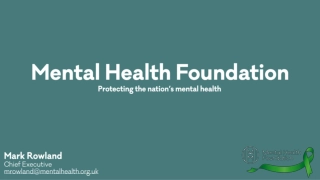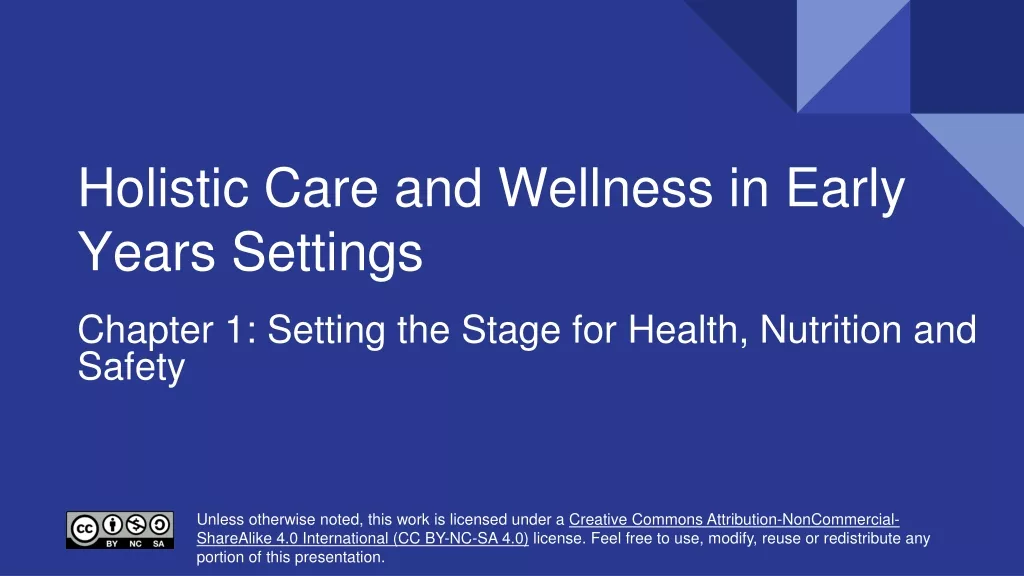Dimensions of Health and Well-being: A Holistic Approach
Understanding the various dimensions of health - physical, mental, social, emotional, spiritual, vocational, educational, and nutritional - is crucial for achieving overall well-being. Each dimension plays a unique role in contributing to a person's holistic health, encompassing aspects such as physical fitness, mental resilience, social connections, emotional balance, spiritual fulfillment, vocational satisfaction, educational awareness, and proper nutrition. By addressing these dimensions, individuals can strive towards a balanced and fulfilling life.
Download Presentation
Please find below an Image/Link to download the presentation.
The content on the website is provided AS IS for your information and personal use only. It may not be sold, licensed, or shared on other websites without obtaining consent from the author. Download presentation by click this link. If you encounter any issues during the download, it is possible that the publisher has removed the file from their server.
Presentation Transcript
Good Good Afternoon Afternoon To All To All
Dimension of Health: Physical Dimension: Physical dimension refers to the perfect functioning of the body externally and internally. Externally- good physique, attractive figure, groomed movements. Internally- all systems of human body- good posture, appearance, efficient
Mental Dimension: Mental health is a balanced development of an individual s personality and emotional attitudes which enable human beings to live harmoniously with his fellow beings. A mentally healthy person is free from internal conflicts, feels comfortable and secured about himself, accepts his short-coming, has self respect, feels right towards other and is able to feel a part of the group, takes responsibilities, is able to meet the demands of life, is able to identify and face the problems in life.
Social Dimension: Social health is the ability to get along with one self and others, to be independent at the same time to realize how dependent one is on others. The quantity and quality of an individual s interpersonal ties and the extent of involvement with the community. Social maladjustment is a problem which is often reflected in reduced mental health. A socially healthy person possesses the desirable qualities of integrity, unselfishness, fairness, co-operation etc. forgiveness, sense of
Emotional Dimension: Emotional health means emotional fitness and emotional control. A person can be called as emotionally healthy if his emotions are always positive, and has full control over his emotion. A person who has no control on his emotions or is over power by negative emotion can be called as emotionally imbalanced or emotionally ill.
Spiritual Dimension: Spiritual dimension refers to having faith in divine power, the presence of spiritual elements, spiritual health refers to that part of the individual which reaches out and strives for meaning and purpose of life. Vocational Dimension: Vocational dimension emphasis upon the problems of livelihood and ensures the fulfillment of the economic needs of an individual.
Educational Dimension: Educational dimension of health is the process of changing behaviour of a person after taking education. It creates awareness regarding health rules, promotes health environment and shows the path to follow towards healthful living. Nutritional Dimension: Good nutrition is a basic component of health. It is the prime importance in attaining normal growth and development, and in the maintenance of health throughout life. builds up healthy
Objectives of Health Education: Informing people. Motivating people. Guiding into action. Aims of Health Education: To encourage people to adopt and sustain health promoting life. To promote proper use of health services available to them. To create interest and arose provide new knowledge improve skill and change attitudes in making rational decision to solve their own problems.
To stimulate individual and community self-reliance and participation to achieve good health through individual and community involvement at every step from identification of problems to solving the problems.

















































